Best Business Proposal Templates to Buy in January 2026
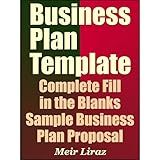
Business Plan Template: Complete Fill in the Blanks Sample Business Plan Proposal (With MS Word Version, Excel Spreadsheets, and 9 Free Gifts) – Updated 2022 Edition



How to Write a Business Plan With No Experience: A Simple Guide With Tons of Business Plan Examples to Achieve a Successful Business and Attain Profitability (Business Blueprint)



Writing Proposals: A Handbook of What Makes your Project Right for Funding (includes proposal template)


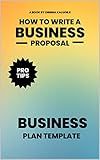
How to Write a Business Plan: Business Proposal Template


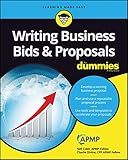
Writing Business Bids and Proposals For Dummies


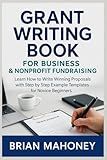
Grant Writing Book for Business & Nonprofit Fundraising: Learn How to Write Winning Proposals with Step by Step Example Templates for Novice Beginners


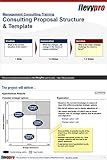
Management Consulting Proposal Structure & Template: Business Presentation



Real Estate Business Plan Template



Cleaning Estimate Form Book: House Cleaning Service Quote Record, Cleaning Checklist, DIY Cleaning Service Business Form, Cleaning Proposal | Cleaning ... Commercial & Deep Cleaning Services


A product proposal is a document that outlines a plan to introduce a new product or improve an existing product. It typically includes details such as the product's features, target market, competition analysis, pricing strategy, distribution plan, marketing and sales tactics, and financial projections. The goal of a product proposal is to persuade stakeholders, such as investors or senior management, to approve the development and launch of the product. The proposal serves as a roadmap that guides the product development process and helps ensure that the product meets the needs and expectations of customers.
How to format a product proposal?
- Title Page: Include the name of the product proposal, your name, title, company name, and contact information.
- Executive Summary: Provide a brief overview of the product proposal, highlighting key points such as the purpose of the product, target market, benefits, and goals.
- Introduction: Introduce the product proposal, providing background information about the problem or need that the product addresses.
- Product Description: Describe the product in detail, including its features, functionalities, and specifications.
- Target Market: Identify the target market for the product proposal, including demographics, needs, and preferences.
- Competitive Analysis: Conduct a competitive analysis to assess how the product proposal compares to existing products in the market.
- Marketing Strategy: Outline the marketing strategy for the product proposal, including pricing, distribution, and promotion strategies.
- Sales Forecast: Provide a sales forecast, estimating revenue projections for the product proposal.
- Implementation Plan: Detail the steps and timeline for implementing the product proposal, including production, distribution, and marketing activities.
- Cost Analysis: Break down the costs associated with developing, producing, and marketing the product proposal.
- Conclusion: Summarize the key points of the product proposal and make a compelling case for why it should be considered for implementation.
- Appendices: Include any supporting materials or additional information, such as market research data, product samples, or testimonials.
Overall, ensure the proposal is well-organized, easy to read, and visually appealing with appropriate headings, bullet points, and graphics to enhance clarity and engagement.
How to present a product proposal to stakeholders?
Presenting a product proposal to stakeholders is a crucial step in gaining buy-in and support for your idea. Here are some tips to effectively present your product proposal to stakeholders:
- Understand your audience: Before presenting your product proposal, it's important to understand your stakeholders' priorities, concerns, and expectations. Tailor your presentation to address their specific needs and concerns.
- Clearly define the problem: Start your presentation by clearly defining the problem that your product addresses. Explain why this problem is important and how your product can solve it.
- Highlight the benefits: Clearly outline the benefits of your product proposal. Explain how it will add value to the organization, improve efficiency, reduce costs, increase revenue, or meet customer needs.
- Provide supporting data: Back up your product proposal with data and research. Present market analysis, customer feedback, competitive analysis, and any other relevant data that supports your proposal.
- Demonstrate the product: If possible, provide a demonstration of the product to stakeholders. Show them how the product works and how it addresses the problem. Visual aids such as mockups, prototypes, or wireframes can help stakeholders visualize the product.
- Address potential concerns: Anticipate any potential concerns or objections that stakeholders may have and address them proactively in your presentation. Be prepared to answer questions and provide explanations as needed.
- Outline the implementation plan: Clearly outline the steps needed to implement the product proposal, including timelines, resources required, and potential challenges. Show stakeholders that you have a solid plan for execution.
- Present a compelling business case: Clearly outline the financial implications of your product proposal. Present a compelling business case that shows the return on investment, potential cost savings, revenue projections, and other financial benefits of implementing the product.
- Ask for feedback: Encourage stakeholders to provide feedback and ask for their input on the product proposal. Listen to their concerns and suggestions, and be open to making adjustments to your proposal based on their feedback.
- Follow up: After the presentation, follow up with stakeholders to answer any remaining questions, provide additional information, and address any concerns. Keep stakeholders informed of progress and updates on the product proposal.
By following these tips, you can effectively present your product proposal to stakeholders and gain their support for your idea.
What is the role of competitive analysis in a product proposal?
Competitive analysis plays an important role in a product proposal by helping the company better understand the existing market landscape and how their product compares to competitors. It helps to identify competitors' strengths and weaknesses, market share, strategies, and customer base.
By conducting competitive analysis, companies can improve their own product by learning from competitors' successes and failures, identifying gaps in the market that they can exploit, and positioning their product more effectively.
Ultimately, competitive analysis helps companies make informed decisions about their product strategy, pricing, marketing, and overall approach to entering the market. It provides valuable insights that can guide the development and promotion of the product, ultimately increasing its chances of success.
How to define the target market in a product proposal?
Defining the target market in a product proposal involves conducting thorough market research and analyzing various factors to identify the specific group of consumers that the product will cater to. Here are some steps to define the target market in a product proposal:
- Conduct market research: Begin by conducting in-depth market research to gain an understanding of the current market trends, customer preferences, competitor offerings, and other relevant data.
- Analyze customer demographics: Look at various demographic factors such as age, gender, income level, education level, occupation, and location to determine the characteristics of the target market.
- Consider psychographic factors: Explore the psychographic characteristics of the target market, including their lifestyle, values, attitudes, interests, and purchasing behaviors.
- Identify needs and preferences: Determine the specific needs, problems, and preferences of the target market that the product can address or fulfill.
- Segment the market: Divide the overall market into distinct segments based on common characteristics and behaviors. Choose the segment that aligns best with the product offering.
- Create buyer personas: Develop detailed buyer personas that represent the ideal customers within the target market. Include information such as demographics, interests, pain points, and buying behaviors.
- Evaluate market size and potential: Assess the size of the target market and estimate the potential demand for the product within that market segment.
- Consider competitive landscape: Analyze the competition within the target market to understand how the product will differentiate itself and attract customers.
- Develop a positioning strategy: Determine how the product will be positioned in the market to effectively target and appeal to the identified target market.
- Clearly define the target market in the product proposal: Summarize the key findings and characteristics of the target market in the product proposal. Clearly communicate why this target market is the most viable and profitable for the product.
By following these steps, you can effectively define the target market in a product proposal and tailor your marketing strategies to reach and engage with the desired customers.
